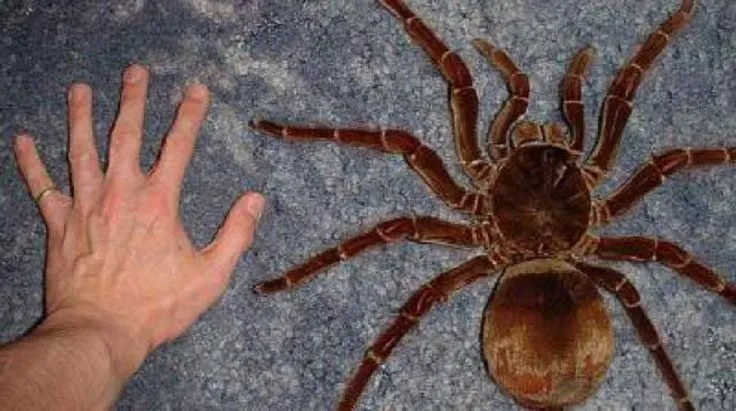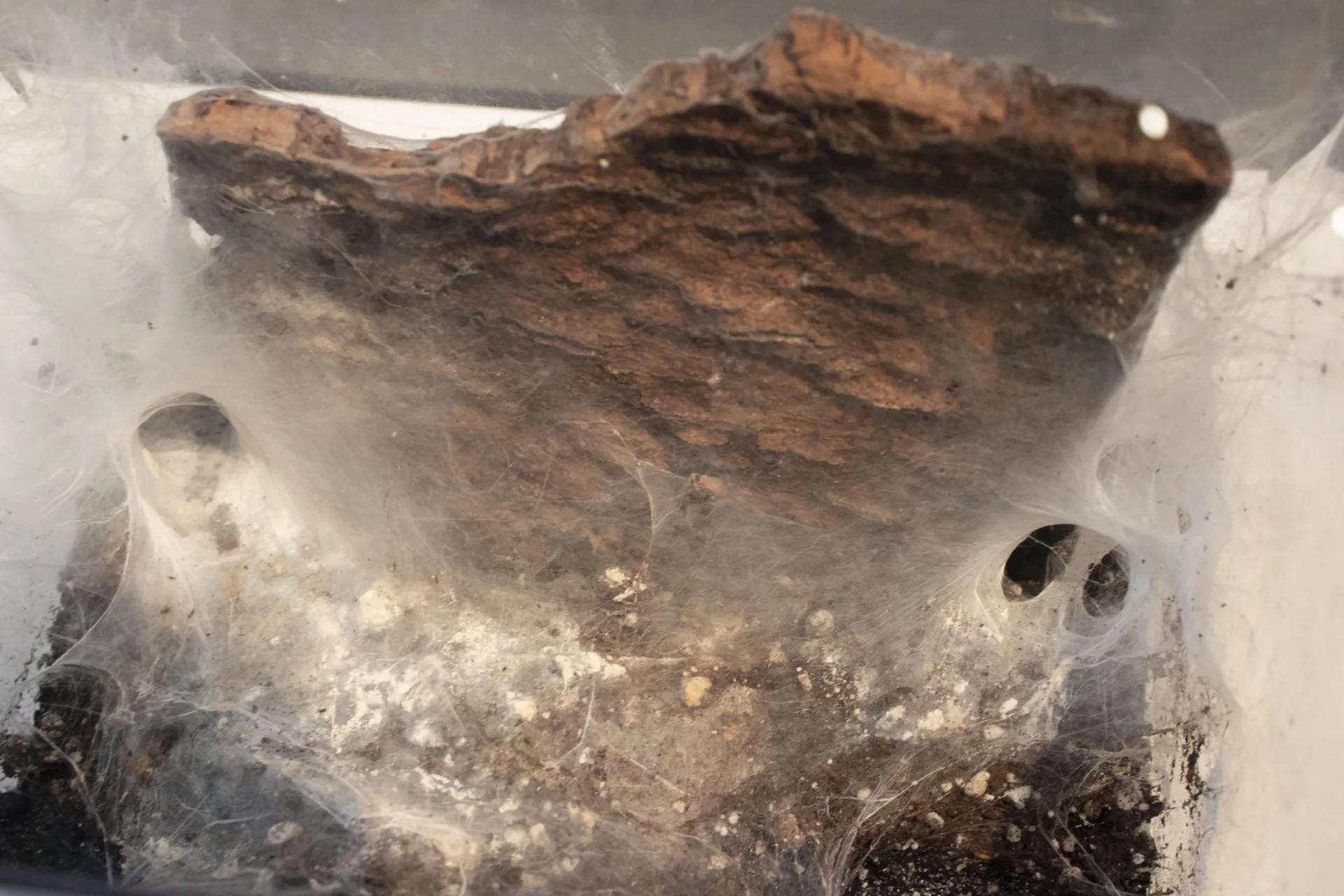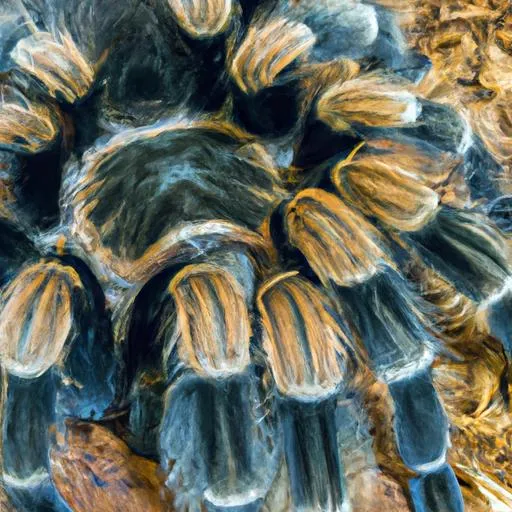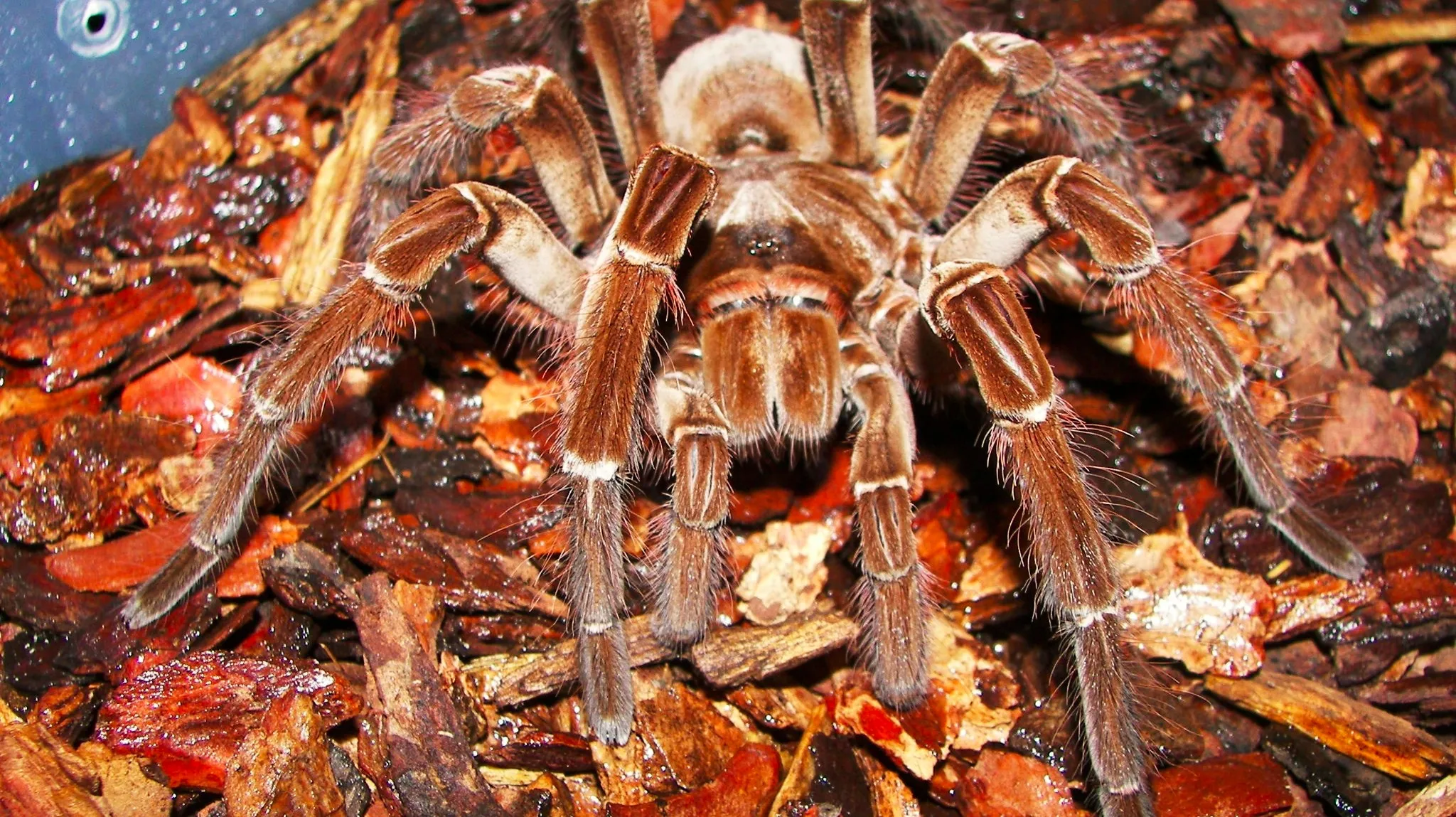What is the Worlds Biggest Tarantula?
The title of “worlds biggest tarantula” belongs to the Goliath Birdeater (Theraphosa blondi), a truly awe-inspiring arachnid. This spider, native to the rainforests of northern South America, is renowned for its massive size and imposing presence. Understanding the Goliath Birdeater goes beyond simply knowing its name; it involves appreciating its biology, behavior, and the role it plays in its ecosystem. This article delves into the fascinating details of this giant spider, exploring its physical characteristics, habitat, diet, and other intriguing facts that make it a remarkable creature. Prepare to be amazed by the worlds biggest tarantula!
Goliath Birdeater Details
The Goliath Birdeater, a member of the Theraphosidae family, is a sight to behold. It is not just the largest tarantula; it is one of the largest spiders in the world, period. This species is known for its impressive leg span, which can reach up to 12 inches or more. These spiders are not typically kept as pets due to their large size and complex care requirements. They are fascinating creatures. The Goliath Birdeater’s size is a testament to the rich biodiversity of the rainforests they inhabit and their ability to thrive in their environment. Their existence is a reminder of the incredible diversity found within the animal kingdom and the wonders that await those who explore the world around them.
Size and Weight

When discussing the worlds biggest tarantula, size is paramount. Goliath Birdeaters can have a leg span that stretches up to 12 inches (30 centimeters), making them larger than many dinner plates. They can also weigh over 6 ounces (170 grams), rivaling the weight of a small puppy. This impressive size is a result of their robust bodies and powerful legs, designed for navigating the forest floor and capturing prey. This enormous size allows them to hunt larger prey than many other tarantula species. Their size also impacts their behavior, as they tend to be less agile than smaller tarantulas. The Goliath Birdeater’s size is a crucial part of its identity and its success as a predator.
Habitat and Distribution
These giants are primarily found in the rainforests of northern South America, including countries such as Brazil, Venezuela, Guyana, Suriname, and French Guiana. They prefer humid environments with dense vegetation and readily burrow into the ground. Their habitat is crucial for their survival, providing them with shelter from the elements and a diverse array of prey. The rainforest floor, with its rich soil and abundance of insects and small animals, is the perfect hunting ground for these massive spiders. The destruction of rainforest habitats poses a significant threat to the Goliath Birdeater, highlighting the importance of conservation efforts to protect their home.
Appearance and Physical Characteristics
The Goliath Birdeater presents a formidable appearance. Their bodies are typically covered in brown or dark-brown hairs, providing camouflage against the forest floor. They have powerful fangs and a pair of chelicerae, used for injecting venom and grasping prey. Like all spiders, they have eight legs and two body segments, the cephalothorax and the abdomen. The Goliath Birdeater also possesses urticating hairs on its abdomen, which it can flick towards potential threats as a defense mechanism. These hairs cause irritation, deterring predators. The overall appearance of the Goliath Birdeater is a testament to its predatory lifestyle, perfectly adapted for survival in its rainforest habitat.
Diet and Feeding Habits

Despite its name, the Goliath Birdeater rarely eats birds, though it has been observed doing so. Its diet primarily consists of insects, such as beetles and crickets, as well as other invertebrates. They are opportunistic predators, and they will also consume small vertebrates, such as lizards, frogs, and even small mammals, if the opportunity arises. They are ambush predators, waiting patiently for prey to come within striking distance. Their powerful fangs and venom help to subdue their meals. Their feeding habits are essential to the ecosystem, helping to control populations of other animals and contributing to the flow of nutrients.
What Does the Worlds Biggest Tarantula Eat?
The Goliath Birdeater’s diet is incredibly diverse, mirroring the biodiversity of its rainforest habitat. Primarily, these massive spiders feed on a variety of insects, which can include large beetles, crickets, and other invertebrates found on the forest floor. They are not strictly insectivores, however. Goliath Birdeaters are opportunistic hunters, and their diet can extend to include small vertebrates such as lizards, frogs, and even small rodents. The name “Birdeater” stems from occasional observations of these spiders consuming small birds, although this is not a regular occurrence. Their varied diet highlights the Goliath Birdeater’s adaptability and its place as an apex predator within its ecosystem.
Lifespan and Life Cycle
The Goliath Birdeater has a relatively long lifespan compared to many other spider species. Females can live for 12 to 25 years or longer, while males typically have a shorter lifespan, around 3 to 6 years. Their life cycle involves several molting stages as they grow. Molting is the process of shedding their exoskeleton to allow for growth. During this vulnerable period, they are susceptible to predators. The lifespan of a Goliath Birdeater is a testament to its adaptability and resilience, allowing it to thrive in its challenging rainforest environment. Understanding their lifespan is crucial for conservation efforts.
How Long Does the Worlds Biggest Tarantula Live?

The Goliath Birdeater boasts a significantly long lifespan within the spider world. Females of this species can live for an impressive 12 to 25 years, or even longer under ideal conditions. This longevity is a key factor in their ability to reproduce and contribute to the population’s stability. In contrast, the lifespan of male Goliath Birdeaters is considerably shorter, typically ranging from 3 to 6 years. This difference is largely due to the males’ role in reproduction and the risks they face during this process. The extended lifespan of the female Goliath Birdeater allows for multiple opportunities to reproduce and ensures the continuation of the species. Understanding their life cycle is critical for effective conservation and preservation efforts.
Behavior and Temperament
Goliath Birdeaters are generally docile, but they can be defensive if provoked. They are known to hiss and flick their urticating hairs as a warning. They are primarily nocturnal creatures, spending most of the day in their burrows or hiding under cover. Their behavior is largely driven by their predatory nature and their need to avoid predators. Understanding their behavior is crucial for anyone interacting with these spiders, whether in the wild or captivity. Respecting their space and recognizing their warning signs are essential to avoid any unwanted encounters.
Are Goliath Birdeaters Aggressive?
Goliath Birdeaters are generally not considered aggressive. However, they possess defensive mechanisms and will react if they feel threatened. If provoked, they may display a warning behavior, such as hissing or flicking urticating hairs. Their reaction is primarily a defense mechanism, aimed at deterring potential predators or threats. The temperament of these spiders underscores the importance of responsible interaction and respect for their natural behaviors. While they are not prone to unprovoked aggression, it is crucial to handle them with care and understanding. This can help ensure the safety of both the spider and anyone interacting with it.
Conservation Status and Threats

The Goliath Birdeater is not currently listed as endangered, but it faces several threats. Habitat loss due to deforestation and agriculture is a significant concern. The pet trade can also pose a threat if it is unsustainable. Conservation efforts are essential to protect their habitat and ensure their survival. Protecting their environment, combating deforestation, and regulating the pet trade are crucial steps towards safeguarding these magnificent creatures. Supporting conservation organizations and promoting responsible practices is paramount to protect the Goliath Birdeater for future generations.
What are the Biggest Threats to the Worlds Biggest Tarantula?
The Goliath Birdeater, despite its imposing size, is susceptible to several significant threats. Habitat loss due to deforestation and human encroachment is a major concern. The destruction of their rainforest homes diminishes their hunting grounds and shelters, impacting their ability to thrive. Another considerable threat stems from the unsustainable pet trade. Over-collection from the wild, without appropriate regulation and management, can severely deplete local populations. Climate change also poses a threat, potentially altering their habitat and food sources. Addressing these threats requires a multi-faceted approach, including habitat preservation, sustainable pet trade practices, and global efforts to combat climate change. These are essential to ensure the Goliath Birdeater’s continued survival.
Interesting Facts about the Goliath Birdeater
Here are some fascinating facts about the Goliath Birdeater: They are one of the largest spiders in the world by mass. They have powerful fangs that can be over an inch long. They can produce a hissing sound by rubbing their legs together. They have urticating hairs that can cause skin irritation. These facts showcase the unique and fascinating aspects of this incredible species. They are a reminder of the wonders of the natural world and the importance of preserving its diversity.
